


Oxford Specialist Handbooks
Series · 32
books · 1996-2022
Books in series

#1
The Oxford Specialist Handbook of Community Paediatrics (Oxford Specialist Handbooks)
2012
Containing concise but detailed summaries on a comprehensive range of clinical scenarios and conditions likely to be encountered by trainees, paediatricians, therapists, nurses, and allied professionals in their day-to-day practice, Community Paediatrics is the ideal companion for anyone working with children in the community.
The handbook is organized according to the different sub-specialities of community paediatrics, such as child development, neurodevelopmental disorders, and child protection, and incorporates the latest recommendations from current practice, consensus statements, and good practice guidelines.
Written by a vast range of contributors from various disciplines who are local, regional, national or international experts in their field, it also contains sections on support organizations, sources of further information/reading, and useful appendices, such as developmental milestones, growth, and BMI centile charts.
If you are a health professional working or aspiring to work in the community, then this practical, easy-to-carry, quick-reference handbook is a 'must-have' title, enabling the reader to deliver the highest quality holistic child-centred care.

#4
Oral and Maxillofacial Surgery
2010
Oral and Maxillofacial Surgery gives a concise and structured overview of current maxillofacial practice, concerned with the diagnosis and surgical treatment of diseases affecting the mouth, jaws, face, and neck. It is illustrated throughout with line diagrams and photographs to aid
understanding of the procedures.
The book is particularly useful to trainees in maxillofacial surgery at both junior and senior level, working towards the MFJDS and the FRCS and comprehensively covers the syllabus for exit FRCS (OMFS). It will also be of interest to doctors, dentists, and other health professionals. It is
co-authored by a team of consultants who have clinical interests encompassing the breadth of the specialty and who are actively involved in teaching, both nationally and internationally.

#5
Cardiac Electrophysiology and Catheter Ablation
2010
Cardiac Electrophysiology and Catheter Ablation is the first handbook-sized practical training guide for medical, technical and industry personnel needing easily accessible, detailed information on the theory and practice of modern invasive investigation and treatment of cardiac arrhythmias.
Highly illustrated throughout, it both simplifies and clarifies the basic electrophysiological principles of many arrhythmias, as well as providing practical advice on performing catheter ablation in patients with a variety of arrhythmias. The step-by-step guidance provided is designed to facilitate
the use of the book for real-life scenarios in the catheter laboratory and to demystify this traditionally inaccessible field for the wider cardiology community.

#6
Paediatric Neurology
2007
Paediatric Neurology contains all the necessary guidance to investigate, diagnose and treat many of the common and rare neurological conditions in paediatrics. Each condition is covered by its own topic providing information on symptoms and signs, complications and emergency intervention.
Other contents anatomical diagrams for quick and easy reference; expert guidance on drug usage in paediatric neurology; highlighted emergencies section; and, North American perspectives on management.
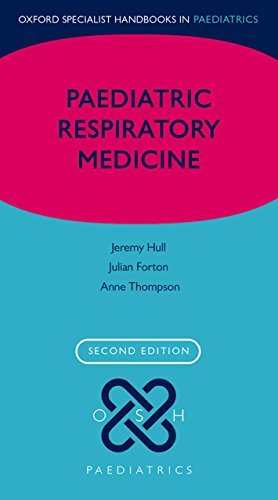
#7
Paediatric Respiratory Medicine
2008
Paediatric Respiratory Medicine Second edition remains the first point of reference for those faced with treating acute or chronic respiratory problems. The handbook discusses the approach to clinical problems, specific conditions, supportive care and practical procedures, and includes vital appendices covering specific tests and statistics. Designed as a practical guide, it serves general and specialist paediatricians at both consultant and trainee level.The book is divided into five parts. Part I provides a practical approach to acute and non-acute clinical problems. Part II provides detailed information about common and more rare clinical conditions. Part III provides useful information on supportive care, including for example, use of non-invasive ventilation and the care of a child with a tracheotomy. Part IV gives details on how to perform several practical procedures, such as ciliary brush biopsy, flexible bronchoscopy, and inserting achest drain. The appendices provide information on lung function testing and tables of age-corrected normal values for several respiratory parameters.Written by three consultants in paediatric respiratory medicine, their expertise in the subject provides all levels of paediatricians with practical guide on a subject that is increasingly relevant in paediatrics.

#8
Stroke Medicine
2010
The second edition of Stroke Medicine incorporates considerable advances in the treatment of stroke that have occurred since the first edition published. This provides an up-to-date and easily accessible source of information on all aspects of stroke care, from acute care through to rehabilitation and secondary prevention. The new edition includes some additional updates on cardiac investigation of stroke, due to novel methods for detecting atrial
fibrillation, and new trial data has been added to the chapter on Treatment of Stroke. The book includes numerous illustrations and tables presenting information in an easy-to-follow way and is designed to be used by the practising physician as a practical handbook of stroke care.

#10
Oral and Maxillofacial Surgery
2014
Oral and Maxillofacial Surgery Second Edition gives a concise and structured overview of current maxillofacial practice in a user friendly format. The handbook covers all specifics concerned with the diagnosis and surgical treatment of diseases affecting the mouth, jaws, face and neck. It is particularly useful to trainees in maxillofacial surgery at both junior and senior level, working towards the MFJDS and the FRCS and comprehensively covers the syllabus for exit
FRCS (OMFS).
The new edition updates this Oxford Specialist Handbook with respect to new evidence, practice and revised guidelines.
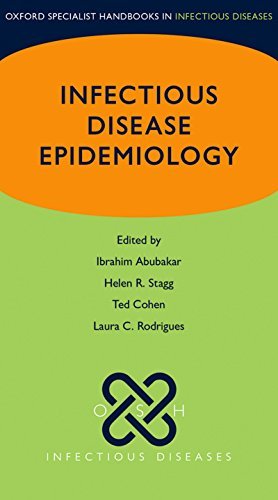
#11
Infectious Disease Epidemiology
2016
Infectious Disease Epidemiology is a concise reference guide which provides trainees and practicing epidemiologists with the information that they need to understand the basic concepts necessary for working in this specialist area.Divided into two sections, part one comprehensively covers the basic principles and methods relevant to the study of infectious disease epidemiology. It is organised in order of increasing complexity, ranging from a general introduction to subjects such as mathematical modelling and sero-epidemiology.Part two examines key major infectious diseases that are of global significance. Grouped by their route of transmission for ease of reference, they include diseases that present a particular burden or a high potential for causing mortality.This practical guide will be essential reading for postgraduate students in infectious disease epidemiology, health protection trainees, and practicing epidemiologists.

#12
Practical Management of Complex Cancer Pain
2014
Practical Management of Complex Cancer Pain gives advice on advanced pain management techniques for cancer pains. Emphasis is placed on the suitability and selection of patients for different invasive and complex procedures based on the patient's history.Case histories provide compressive insight into the complexities of holistic management, with pain being only one of the factors that distress patients and families. The book also covers cancer pain management for patients in a community setting including, the collaboration between pain and palliative medicine.This practical guide to the management and treatment of complex cancer pain is essential reading for all oncologists, pain, and palliative care specialists.

#13
Paediatric Surgery
2009
Paediatric Surgery has been fully updated to reflect current guidelines and practices, and offers a contemporary overview of the subject in general, as well as detailed information about core subjects. Structured to assist problem-solving and diagnosis, the handbook contains detailed clinical features on all aspects of neonatal and general paediatric surgical conditions, it is a key revision tool for the MRCS and FRCS Paediatrics post-graduate exams, as well as the UEMS European exam in paediatric surgery.
The chapter on common operations has been expanded, including new topics on orchidopexy, scrotal exploration, thoracotomy, and appendicectomy, as well as information on robotic surgery. There is also a new chapter on global paediatric surgery, outlining the challenges and future direction of the discipline in India, East Africa, West Africa, and South Africa. Neonatal medicine and neonatal surgery both have new topics on resuscitation, ventilation strategies, jaundice, and congenital lung abnormalities.
With the knowledge level based around what is needed in clinical practice, supporting background and science is included to strengthen understanding. Pragmatic and practical, this second edition of Paediatric Surgery is a vital tool for all those who work in the field.

#15
Spinal Interventions in Pain Management
2012
Concentrating on techniques rather than pain pathology, Spinal Interventions in Pain Management is focused purely on the spine. This practical handbook covers anatomy and imaging, how to choose patients, how to undertake procedures, and includes advice on potential pitfalls.Perfect reading for pain interventionalists and trainees before doing a procedure or before an exam, the book covers the most common spinal interventions for pain that pain specialists undertake, including epidurals, diagnostic facet interventions, the intra-articular injection of the sacroiliac joint and radiofrequency denervation, cervical, thoracic and lumbar discography, and neuromodulation (spinal cord stimulation and intrathecal drug delivery).Extensive illustrations, both x-rays and figures, make the book accessible and help to provide a clear understanding of the anatomy, which underpins spinal interventions.

#16
Paediatric Rheumatology
2012
The new edition of Paediatric Rheumatology is an indispensable resource for the identification and management of specific rheumatological disorders. Fully revised to provide up to date knowledge on common and rare rheumatological problems, including chapters on investigations and emergencies, this practical handbook designed for quick reference is essential reading for those who treat rheumatological conditions.

#17
Parkinson's Disease and other Movement Disorders
2016
This is the second edition of the Oxford Specialist Handbook in Parkinson's Disease and Other Movement Disorders aiming to provide its readership with the latest developments and innovation across the discipline. Alongside this update in content, the addition of new, insightful sections suggested by readers and other experts in the field, will allow the handbook to further develop as the premier quick reference guide for movement disorders.The varied and detailed composition of the handbook's chapters is extremely useful for the various readership of this title. The new edition advances the the knowledge and depth of the previous edition with the addition of a number of new sections. This new and improved edition will be a welcome and extremely useful addition to the neurological world.

#19
Obstetric Medicine
2020
Obstetric Medicine, the first title in a new Oxford Specialist Handbooks series covering Obstetrics and Gynaecology, contains relevant, accessible, and focused information to help both general physicians to manage medical conditions during pregnancy, and the specialist obstetrician manage general medicine in the pregnant patient.
Pregnant women regularly present with medical problems to many different medical specialties, and as their physiology is changed by the pregnancy, so too is the way in which many chronic illnesses behave. There are also differences in which drugs or investigations may be appropriate during pregnancy. This new specialist handbook provides a comprehensive overview of medical conditions in the pregnant patient, and covers the syllabus for both the RCOG Advanced Training Skills Module (ATSM) and
the maternal medicine for obstetric trainees.
Filled with links to national and international guidelines, expert advice, and evidence-based management strategies for a range of acute and chronic conditions that can occur in the pregnant woman, this handbook is an essential new addition to the literature for all physicians who work with pregnant patients in their practice.

#20
Pacemakers and ICDs
2019
Comprehensive, yet practical and concise, the Oxford Specialist Handbook of Pacemakers and ICDs is the ideal training guide on how to implant, follow-up, and troubleshoot pacemakers and ICDs. Fully updated to include new technologies such as subcutaneous ICDs and MRI compatible devices, this new edition provides the latest guidelines and management strategies for the cardiology trainee and cardiac technician.
Covering the principles, programming, potential complications, and troubleshooting for pacemakers, ICDs, and cardiac resynchronisation therapy, this title is an invaluable aid for anyone charged with providing or contributing to a pacing, ICD, or implantable loop recorder service. Written in a succinct bullet-point style, the second edition of the Oxford Specialist Handbook of Pacemakers and ICDs delivers key information in an accessible manner, with over 120 figures including x-rays and annotated ECGs to demonstrate pacing techniques and troubleshooting solutions.

#22
Paediatric Intensive Care (Oxford Specialist Handbooks in Paediatrics) 1st (first) Edition by Barry, Peter, Morris, Kevin, Ali, Tariq
2010
One in 70 children are admitted to paediatric intensive care (PIC) at some time during childhood. Most paediatric junior doctors will rotate through PIC, and will be involved in organizing acute intensive care for critically ill children. The range of children and their illnesses going through PIC is vast, making it a hugely diverse specialty. A critically ill child will end up there regardless of their underlying disease, and as a result consultants in PIC must be true generalists and need to acquire knowledge and skills in all areas of paediatrics, as well as acquiring significant knowledge of anaesthesia and surgery.From setting up the ventilator to managing low cardiac output, Paediatric Intensive Care gives practical and realistic advice for children's doctors and nurses in intensive care. Information is organized by system or specialty, and presented in easily accessible "5 minute chunks," making it easy to get the answers you need, but is also extensively cross-referenced so that different aspects of a particular clinical problem are also covered. The handbook contains answers to specific problems and provides guidance on how to manage specific issues, and will become an indispensable guide for all those who provide care for sick children.

#23
Paediatric Endocrinology and Diabetes
2011
The paediatric endocrinologist deals not only with common problems involving growth, puberty, and diabetes, but also with specific hormonal defects involving glands such as the thyroid, parathyroid, adrenals, and pituitary. These can vary from common variants of normals which will be
encountered by all doctors dealing with children, to more rare disorders requiring specialist input.
Paediatric Endocrinology and Diabetes is written by two experienced paediatric endocrinologists, and deals with anatomy and physiology before moving on to identification, investigation and management of specific endocrine disorders. As well as covering common and less common endocrine problems,
there are also chapters on endocrine investigations and endocrine emergencies, designed for quick reference. The handbook is aimed at junior doctors in training both as specialists and as general paediatricians, as well as specialist nurses in endocrinology and diabetes, but will also be of interest
to consultants in general paediatrics and paediatricians with an interest in endocrinology and diabetes.

#25
Advanced Respiratory Critical Care
2011
Respiratory disease is the most common reason for admission to intensive care and advanced respiratory support is one of the most frequently used interventions in critically ill patients. An intimate understanding of respiratory disease, its diagnosis, and its treatment, is the cornerstone of high quality intensive care. This book includes detailed sections on invasive ventilation, including the principles of each ventilatory mode and its applications in clinical practice. Each disease is discussed at length, with advice on management. The book is aimed primarily at trainees in intensive care and specialist nurses, but will also appeal to both trainees and more senior staff in anaesthesia and respiratory medicine.

#27
Heart Disease in Pregnancy
2011
All cardiologists will be called on to assess and manage pregnant women, however the majority have had little or no training in the subject. In the same way, obstetricians assess women with cardiac conditions, and therefore require the knowledge to both refer patients with heart disease as well as to manage them through the pregnancy. However a recent enquiry into maternal deaths has highlighted that morbidity and mortality of women with heart disease in pregnancy has continued to increase over the last 15 years and substandard care has been identified in 40% of cases. Recommendations have been made that women with, or at risk of, heart disease are screened and counselled on the appropriate risks of undergoing a pregnancy, and as a result all physicians involved need a good understanding of the subject and access to the relevant information.
A concise handbook written for cardiology and obstetric trainees and consultants, as well as specialist nurses and midwives, Heart Disease in Pregnancy provides a detailed introduction to the physiological changes of pregnancy and gives practical advice on the management of women with heart disease who are pregnant or who are considering pregnancy. It also provides the relevant obstetric knowledge and processes needed for a cardiologist to successfully manage a pregnant woman.
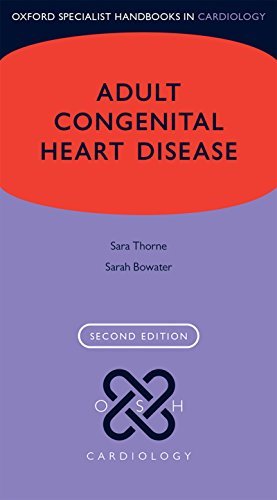
#29
Adult Congenital Heart Disease
2017
A practical approach to the investigation and treatment of adult congenital heart disease (ACHD), this fully updated Oxford Specialist Handbook is a concise and accessible overview of a complex condition. Packed with straightforward advice, management strategies and key clinical points, it equips clinicians with a sound understanding of the principles and physiology of ACHD.An ideal reference tool for cardiology trainees, general cardiologists and acute medicine physicians, this second edition of Adult Congenital Heart Disease has been fully reviewed to include new guidelines and increased illustations to aid understanding. Brand new chapters on epidemiology, heart failure, device therapy and transition and transfer of care ensure that Adult Congenital Heart Disease remains the definitive guide to supporting clinicians throughout all aspects ofthe patient's care.
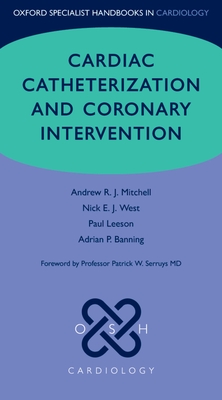
#30
Cardiac Catheterization and Coronary Intervention
2019
Cardiac Catheterization and Coronary Intervention is the first handbook-sized practical training guide for cardiology medical and technical personnel who want easily accessible, detailed information on how to perform a comprehensive left and/or right heart catheterization procedure, choose the
correct catheter for coronary and graft angiography, perform a diagnostic coronary angiogram and interpret and understand their findings. Based on international cardiology and interventional
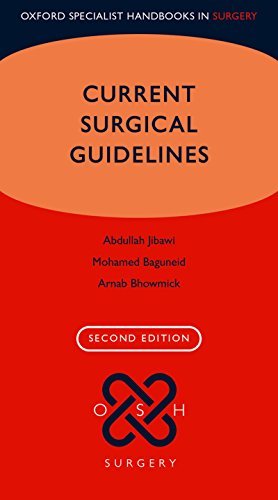
#31
Current Surgical Guidelines
2018
Back for a second edition, Current Surgical Guidelines has been fully updated to reflect changes in guidelines across the surgical sub-specialities since its first publication. Drawing together printed and digital guidelines from the Scottish Intercollegiate Guidelines Network (SIGN), the National Institute for Health and Clinical Excellence (NICE), and relevant US guidelines, this book acts as a valuable complete and comprehensive reference for thoseembarking on their surgical training, revising for exams, or for senior staff as an aide-memoire.Guidelines have been distilled into summary tables, and topics are formulated to answer most real-life clinical practice questions with contemporary facts and figures, decision recommendations, and treatment options. New chapters on hernias, skin malignancies, trauma, and medicolegal practice have been added to increase fresh challenges facing the contemporary surgical trainee.

#32
Vascular Anaesthesia
2014
Providing a practical, current, evidence-based approach to all aspects of perioperative care for the patient with vascular disease, Vascular Anaesthesia is an essential read for all vascular anaesthetists, anaesthetic nurses and anyone else involved in the care of vascular patients throughout the world.Vascular Anaesthesia summarizes current knowledge, particularly on interventional procedures (radiological, diagnostic, and surgical). This book also equips the trainee anaesthetist with the scientific and clinical knowledge to pass the Final FRCA examination. It enables doctors to approach vascular surgical patients with a firm understanding of a particular procedure, particularly its risks and options for perioperative management based on current best practice.The management of the patient with vascular disease is evolving this indispensible poket reference is of sufficient detail to update the regular and occasional vascular anaesthetist with current best practice for particular, common clinical scenarios. The book also equips the non-anaesthetic medical, nursing, and theatre staff with knowledge and understanding of all other aspects of perioperative care.
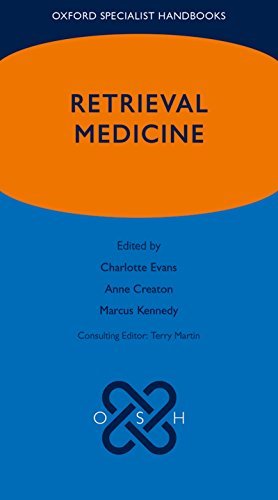
#33
Retrieval Medicine
2016
Retrieval Medicine is a core, concise and practical text covering the complex clinical and logistical problems experienced in the retrieval environment. Focusing on evidence-based management and clear clinical guidance, this easily portable handbook provides a comprehensive and accessible guide to this growing field for all health professionals involved in the retrieval and transfer of critically ill patients.
Covering the practice of acute, emergency and critical care medicine in the transport environment, this handbook provides the practical guidance and clinical knowledge to enable medical practitioners to function independently in highly variable and resource limited environments with acutely unwell, unstable and often clinically undifferentiated patients over long durations. Closely mapped to the Royal College of Surgeons syllabus on retrieval and transfer medicine, this title comprehensively
covers all aspects of retrieval medicine, from basic flight physiology to more complex retrievals and common pitfalls.
Authored by an authoritative, international team of expert editors and specialist authors, this clinically focused text is complemented by a range of checklists and reference tools for practical and accessible use in the field. These deliver core information for use in the primary retrieval setting, allowing the retreivalist to structure their approach to a crisis and correct the problem with suggested interventions. Topics include retrieval systems and coordination, crisis resource
management, shock, and a range of chapters focusing on responding to specific areas of medicine when encountered in the retrieval environment, such as cardiology and obstetrics and gynaecology.

#35
Post-operative Complications
2010
Complications following surgical procedures are not only associated with significant morbidity and mortality, but also add immensely to the psychological burden of the patient and are disappointing for the surgical team. Recent research has led to a greater understanding of the response to surgery and anaesthesia, and great advances have been made in pre-operative preparation with appropriate investigations and pharmacological prophylaxis. These have reduced the incidence of many complications, but the risks are impossible to remove completely.
This wide-reaching and practical handbook covers all aspects of post-surgical complications. It is divided into two the first covers general complications such as pressure sores, complications of fluid balance, and problems related to anaesthesia, while the second focuses on the complications encountered in the major surgical specialties. Fully revised and updated since the previous edition, and written by a team of experts, Post-Operative Complications is essential reading for all those involved in caring for surgical patients.
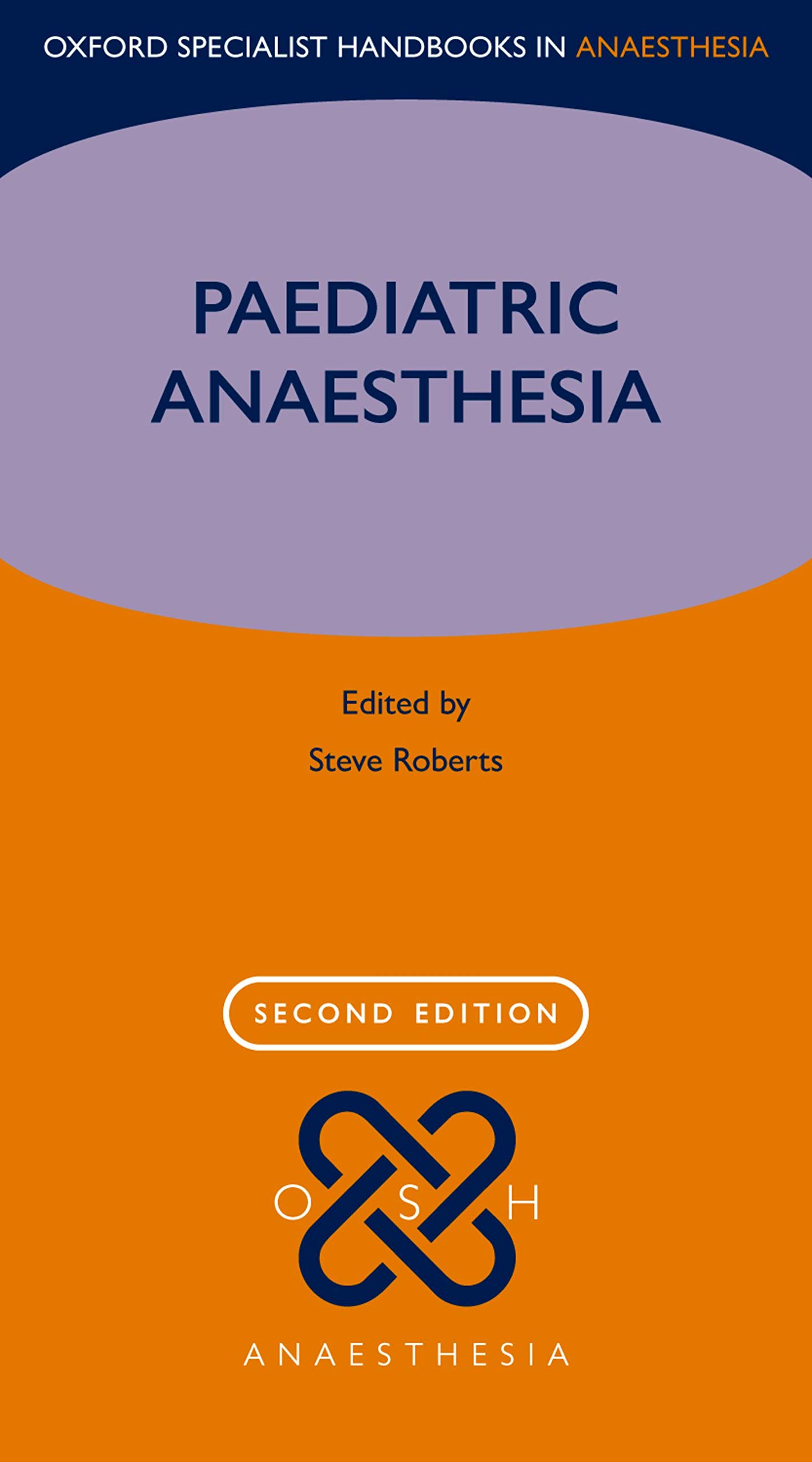
#37
Paediatric Anaesthesia
2019
The Oxford Specialist Handbook in Paediatric Anaesthesia returns for a new edition with updated practical management advice, and detailed perioperative plans for a wide selection of basic and advanced paediatric procedures.Invaluable to trainees and consultants alike, this go-to guide details current techniques in a concise and rapid manner, describing how to approach each case. It covers everything from pharmacology, preoperative assessment, and the basic principles of anaesthetic care, to advanced vascular access, pain management, and neonatal surgery. With additional speciality chapters containing both elective and emergency cases, it is the ideal companion to all aspects of paediatric anaesthesia.· Features up-to-date information on fasting guidelines, pregnancy testing and thromboprophylaxis· Covers patient care from pre-operative assessment to post-operative care.· Contains detailed chapters on advanced airway management, advanced vascular access, and regional anaesthesia.· Includes easy-to-follow perioperative plans for all the common elective and emergency procedures.· New section on resuscitation, transfers, and emergencies.

#39
Heart Failure
From Advanced Disease to Bereavement
2012
Excellent end of life care for people with heart failure is challenging but possible. Failure to address this aspect of care has serious consequences for patients, their families, clinicians and the use of health resources.Heart From Advanced Disease to Bereavement illustrates the complexity and importance of end of life care for patients with advanced heart failure.This book is a pocket reference for everyday use in the clinic, ward or home visit for all doctors, nurses and AHPs caring for people with advanced heart failure.It outlines the underlying pathophysiology of heart failure, summarises standard pharmacological and device therapy, and sets the context of the challenges resulting from an unpredictable course of disease. In easily digestible summaries, this book presents practical advice about how and when to integrate a palliative care approach alongside standard heart failure management, how to communicate honestly in the face of uncertainty, the rationalisation of medication and device therapies at theend of life, symptom control, care for the dying, and care after death.
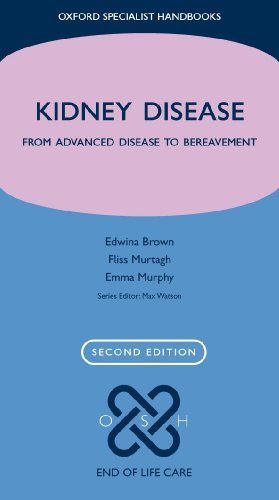
#40
Kidney Disease
From advanced disease to bereavement
2012
Kidney From advanced disease to bereavement provides guidance to renal and palliative care professionals dealing with patients with advanced kidney disease, who are approaching end of life. The book describes the tools used to achieve a good death including advance care planning, symptom control law and ethics, recognizing dying, withdrawal of treatment, and a holistic approach to patient care. By using case histories, the book highlights how tofacilitate good communication between patients, families and their renal and palliative teams. There are also chapters on support for carers and bereavement. Revised and updated, this new edition is written in a bullet point style to provide an indispensable guide to the day-to-day management of patient care. This pocketbook will be an essential guide for nephrologists, renal nurses, nephrologist trainees, and doctors and nurses working in palliative care.
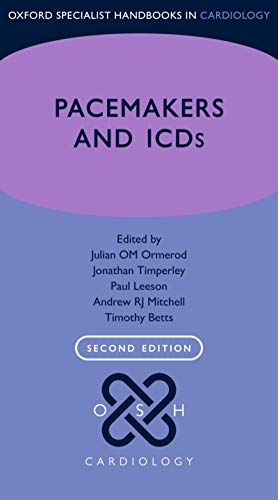
#41
Pacemakers and ICDs
2019
Comprehensive, yet practical and concise, the Oxford Specialist Handbook of Pacemakers and ICDs is the ideal training guide on how to implant, follow-up, and troubleshoot pacemakers and ICDs. Fully updated to include new technologies such as subcutaneous ICDs and MRI compatible devices, this new edition provides the latest guidelines and management strategies for the cardiology trainee and cardiac technician.
Covering the principles, programming, potential complications, and troubleshooting for pacemakers, ICDs, and cardiac resynchronisation therapy, this title is an invaluable aid for anyone charged with providing or contributing to a pacing, ICD, or implantable loop recorder service. Written in a succinct bullet-point style, the second edition of the Oxford Specialist Handbook of Pacemakers and ICDs delivers key information in an accessible manner, with over 120 figures including x-rays and annotated ECGs to demonstrate pacing techniques and troubleshooting solutions.

#42
Paediatric Haemotology and Oncology
2010
While survival rates for children with cancer have increased in recent times, the increased use of more aggressive therapies has brought with it significant adverse effects. Therefore, the aim of pediatric oncologists has become to achieve "cure at least cost" by the appropriate reduction of
the intensity and/or duration of treatment in carefully identified good prognosis patients.
By comprehensively covering these issues, this handbook aims to provide residents in pediatric hematology and oncology, as well as staff in related medical or other healthcare disciplines, with an easily accessible source of information about the basic principles of childhood cancer and leukemia, as
well as much of the more detailed specialist knowledge required to care for children with these conditions. Divided into sections to allow quick access to the necessary information, the handbook covers general principles of diagnosis and treatment, short and long term care, and oncological
emergencies before moving on to chapters on specific disease. Normal values and useful websites are also included for reference.

#44
Neurodisability and Community Child Health
2022
Containing concise, updated, and easy-to-use summaries on a comprehensive range of clinical scenarios and conditions encountered by paediatricians and multi-disciplinary professionals in their everyday practice, this new edition of Neurodisability and Community Child Health has been substantially revised to be the ideal companion for anyone working with children.

#45
Manual of Childhood Infections
The Blue Book
1996
Infectious diseases remain a leading cause of child morbidity and mortality worldwide. Now in its fourth edition, Manual of Childhood Infections is a simple-to-use, evidence-based, and practical handbook on how to recognize, investigate, and manage both common and rare infectious diseases in children and babies. Endorsed by the Royal College of Paediatrics and Child Health and the European Society for Paediatric Infectious Diseases, this fully updated version of the established 'Blue Book' complements the Pan European initiatives and UK diploma courses to harmonise patient management and training in Paediatric Infectious Diseases (PID), making it essential reading for UK and European paediatricians.
Manual of Childhood Infections is divided into two alphabetized sections for easy access to information, covering key diagnosis and management features of infections alongside crucial points of epidemiology and clinical features. This fourth edition forms practical reading for practising paediatricians, featuring updates to all key chapters based on a literature review alongside new chapters focusing on emerging problems for Europe.